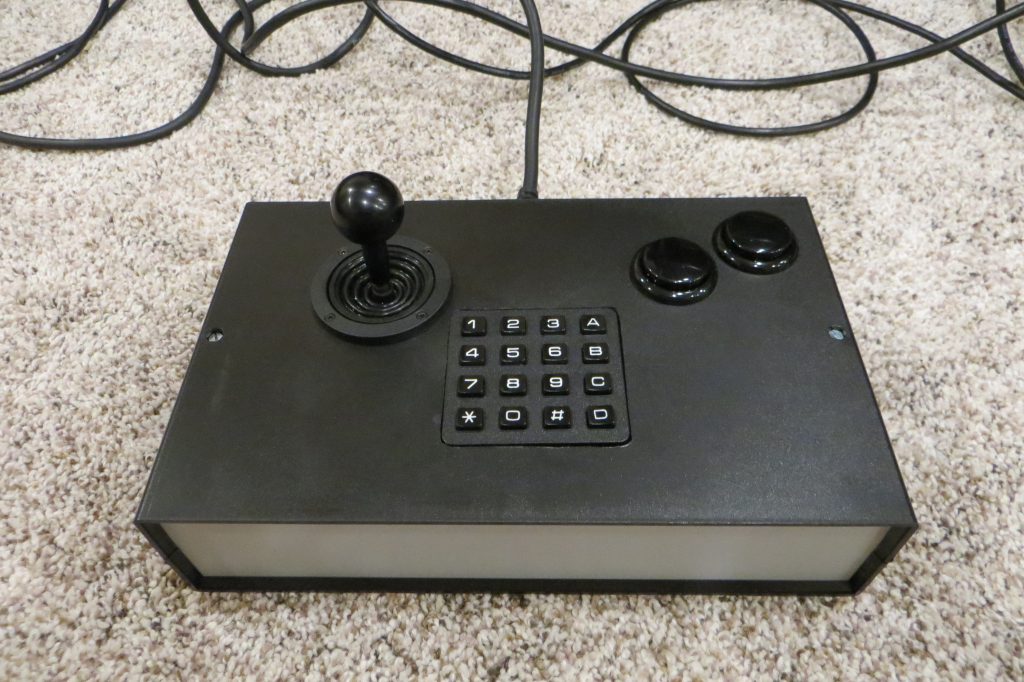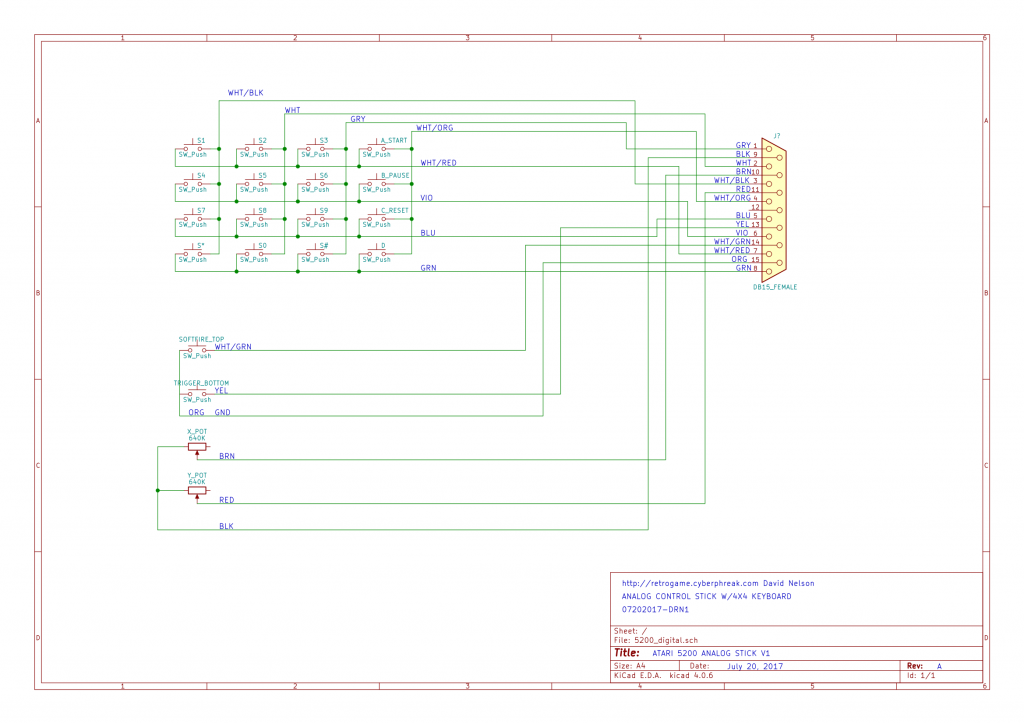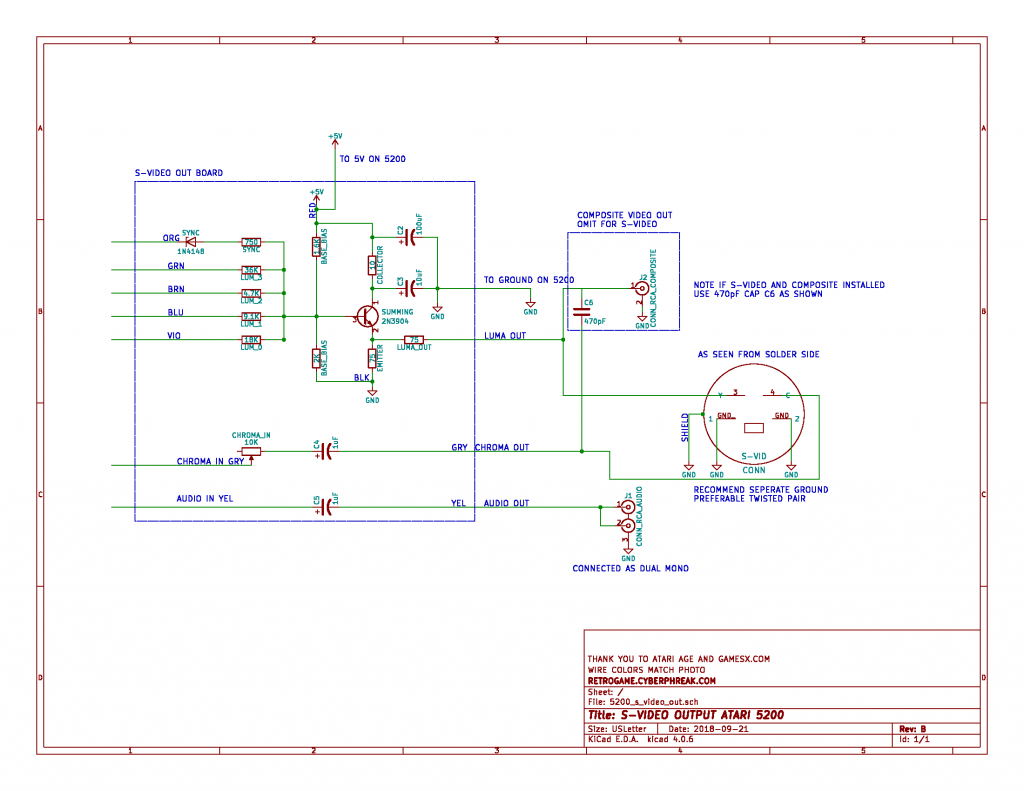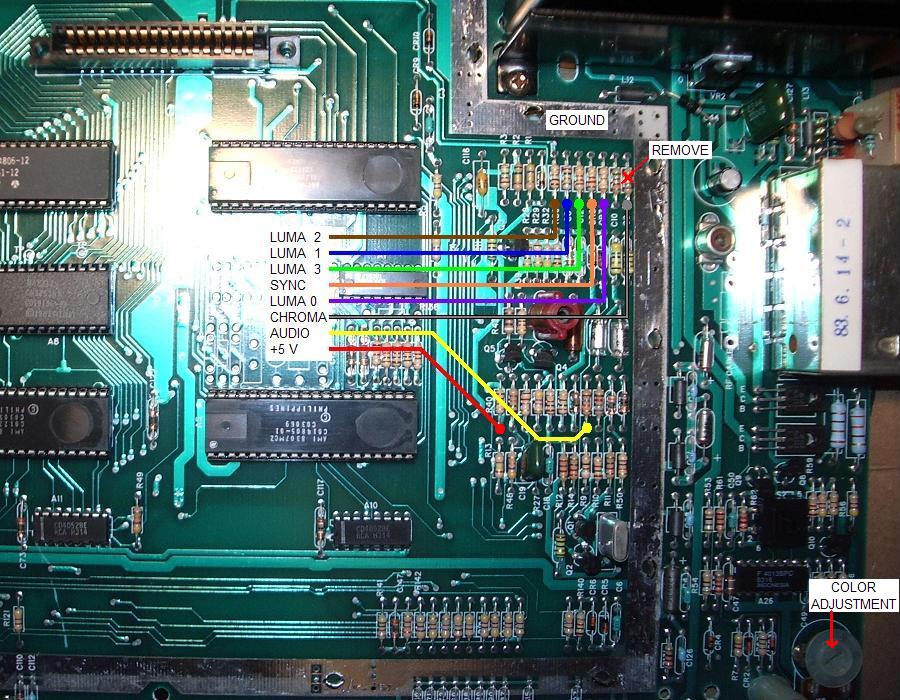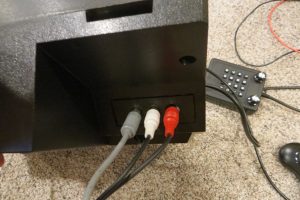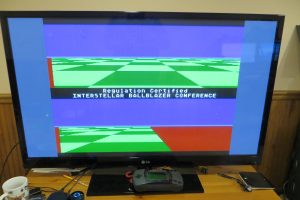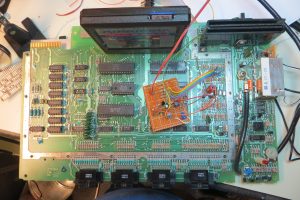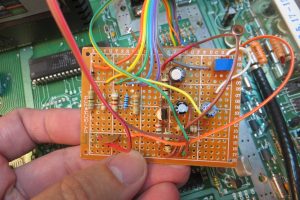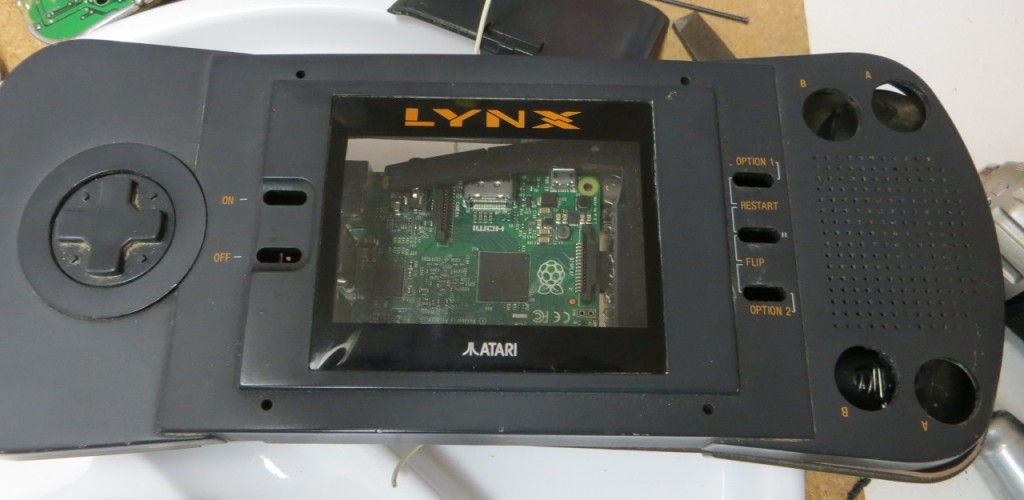About a year ago, a con man by the name of Mike Kennedy was selling the idea of the Retro VGS (Video Game System), which later morphed into the Coleco Chameleon. It was all fun and games until the New York Toy Fair, then the gig was up. It did get me thinking: I have made quite a few retrofit systems, like the Genesis, Lynx, and even a Game.com, what would I do with a blank slate design for a retro arcade/home console system? My inspiration was the ill fated Konix Multisystem. The Konix was supposed to way ahead of its time, and like my Konix, the system and controller would be one unit.
My criteria:
- True arcade style controller, meant to fit adult sized hands.
- Portable, battery powered, 4+ hours battery life.
- No screen, HDMI output only, similar to ‘plug and play’ system in a controller.
- Rugged construction, able to stand up to hours of play.
- Ability to play single button games, such as early 8 bit, right handed.
- Based on Raspberry Pi/RetroPie.
- Have at least 2 available USB ports for other controllers.
So, behold, my Konix RCP (Retro Computing Platform):
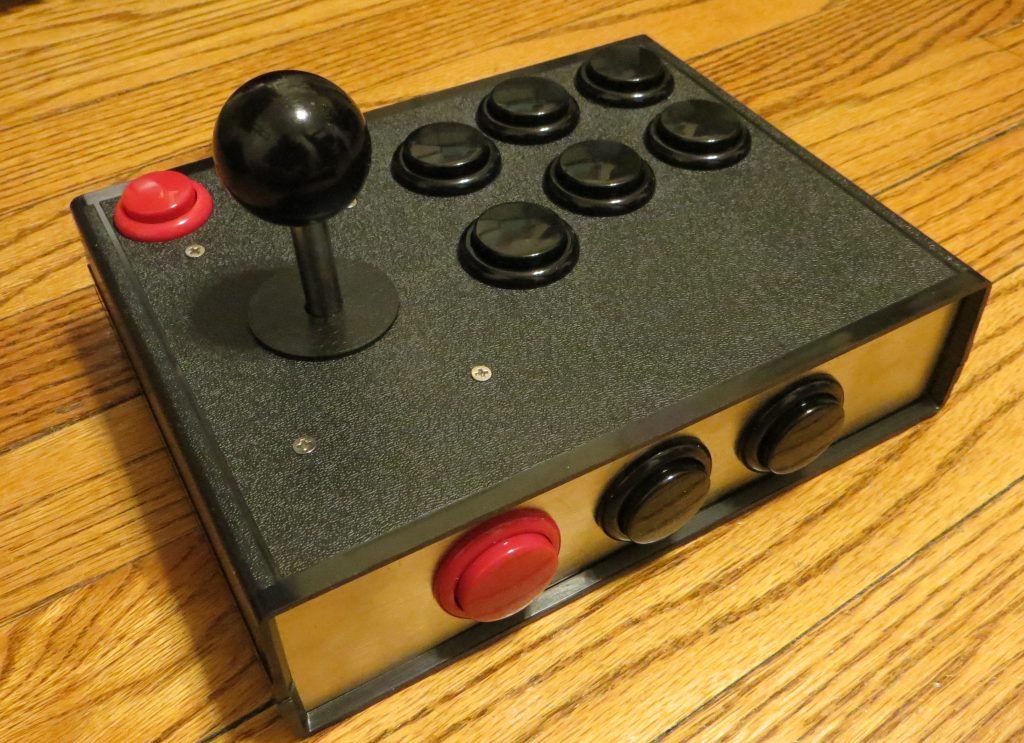
Pretty isn’t it? Since this is a clean sheet design, I didn’t have to worry about trashing a repairable system, or finding space in a tiny system. The enclosure is 8x6x2″ ABS with aluminium ends. This gives it a slightly retro, but very clean look, reminds me of the old Atari 7800 and 2600 jr. I purchased 2 sets of joysticks, one black, one red, so I could mix and match colors, and it allowed me to make a second controller.
Inside is nothing too special:
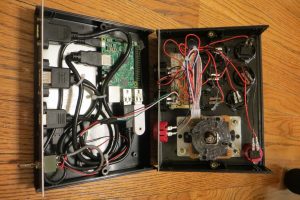
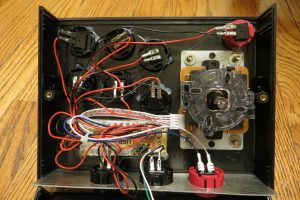
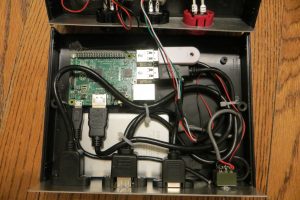
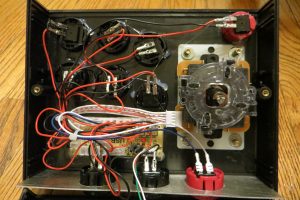
It is a Raspberry Pi, a USB joystick controller, cell phone charger, a couple of port extenders, on/off switch. and the physical joystick and buttons. It is similar to my RetroGenesis, except for the fact this is a new design and it is portable, without a screen.
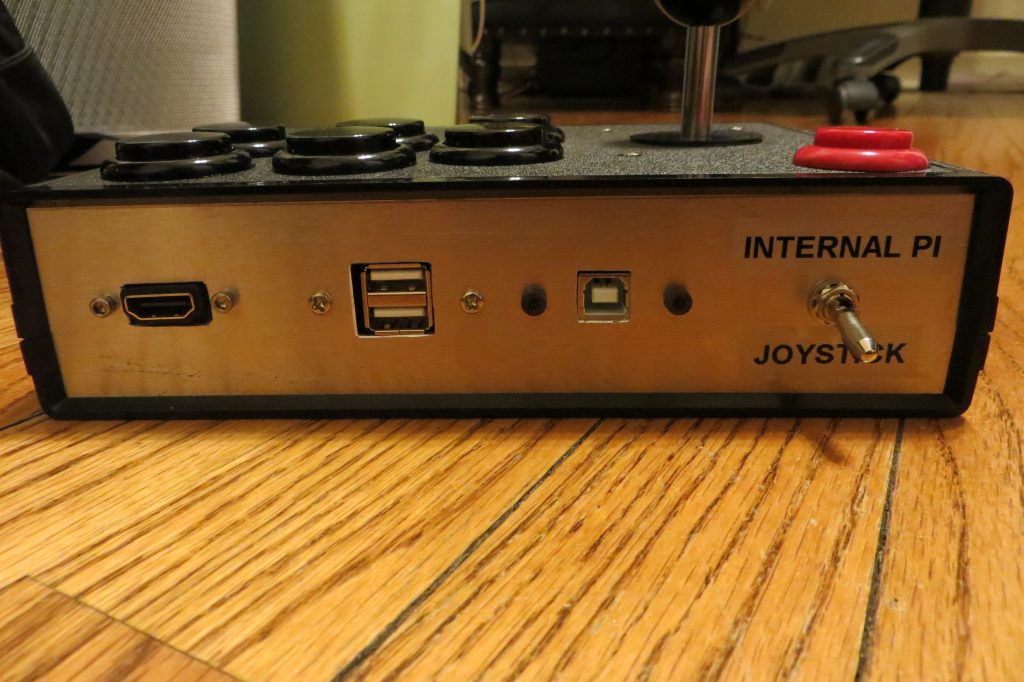
As you can see, the front has all of the needed ports, HDMI, 2 USB, “B” charge port and Internal Pi/Joystick toggle. In joystick mode, you can plug into the “B” style usb port and use the system as a joysticks and charge the internal battery. When toggled to Internal Pi mode, RetroPie boots up and the system is a full emulation system with about 17,000 games loaded.
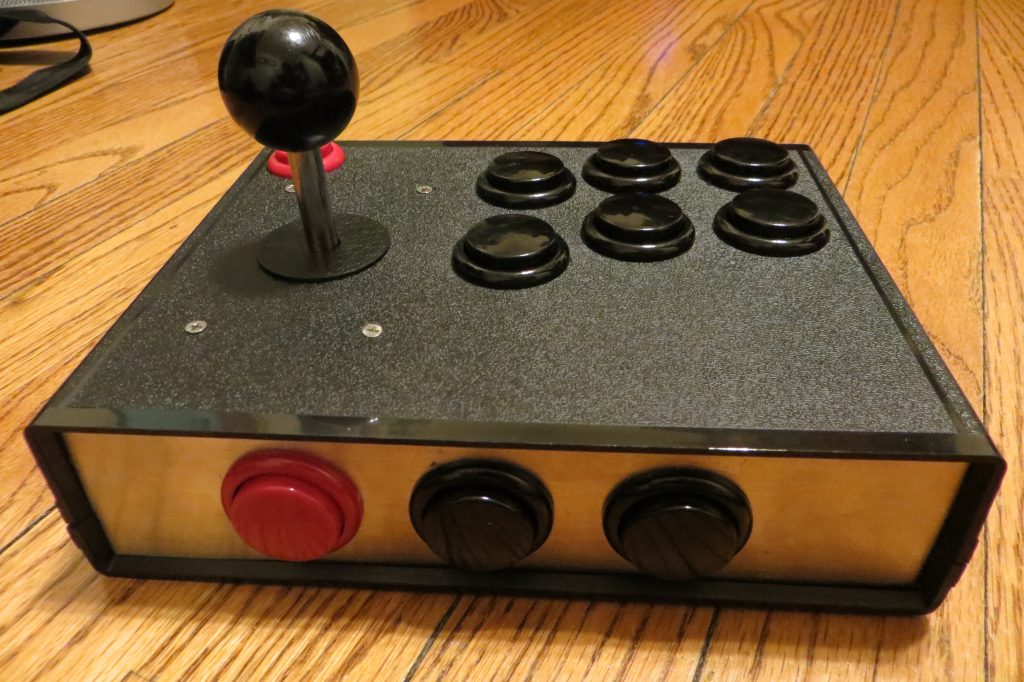
The back, which faces the user, has three buttons. The left, red, button is a dedicated escape key while playing arcade games. The black ones are start/select, or coin 1 and player 1 start.
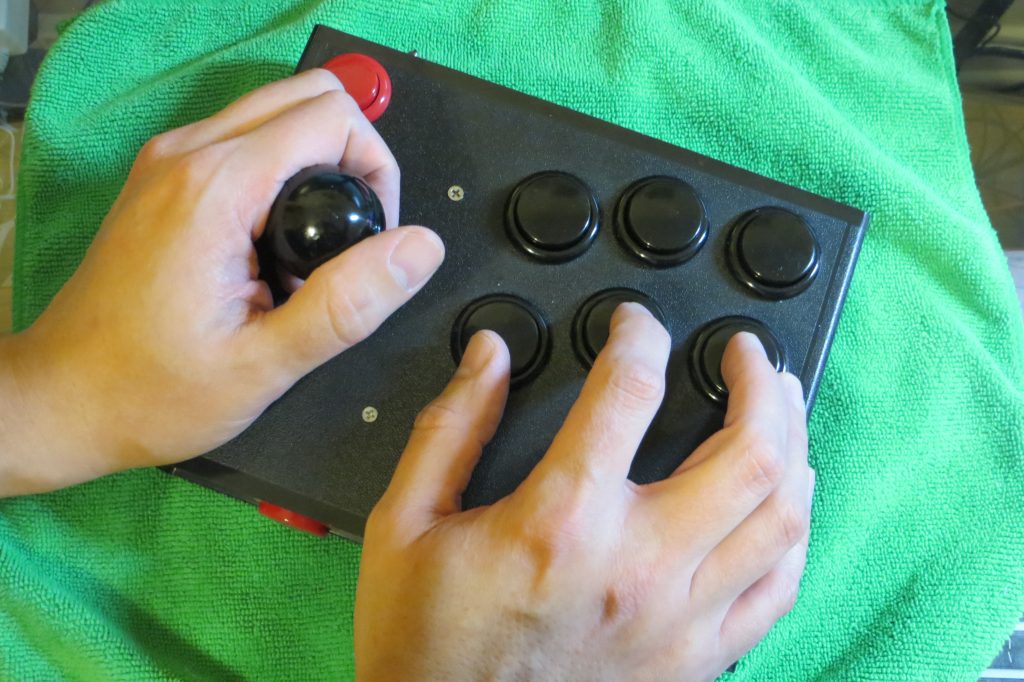
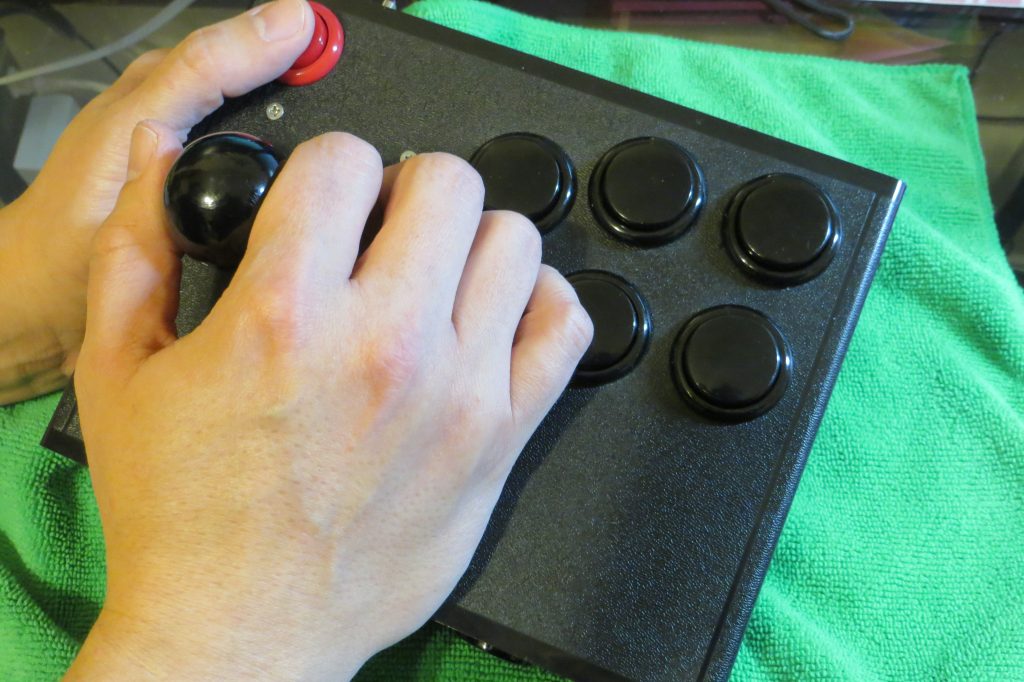
As a personal preference of mine, I added a fire button to allow for right handed play of single player games, like for the 2600 or many older arcade games, including my favorite, Super Pacman.
I am happy to report that my brother and I played this system for over 4 hours on one charge and finished Cadillacs and Dinosaurs for the arcade using this system without a hiccup.
If you would like the button and system layout, here is the an Autocad/Draftsight 2013 drawing of the layout. Konix_RCP in 1:1 PDF format.




